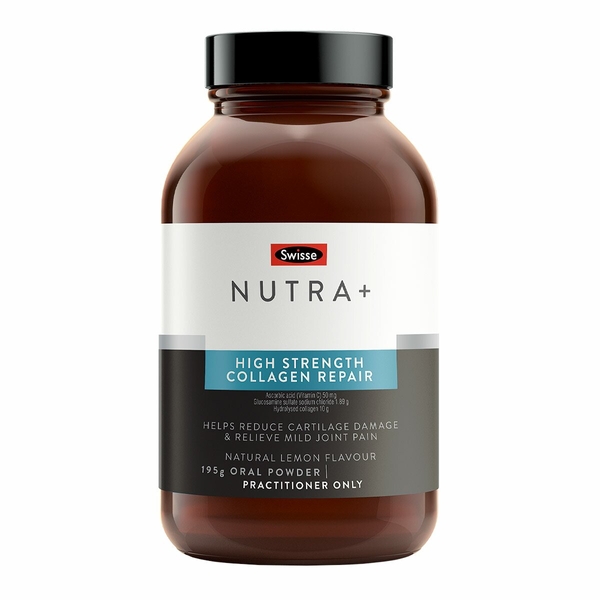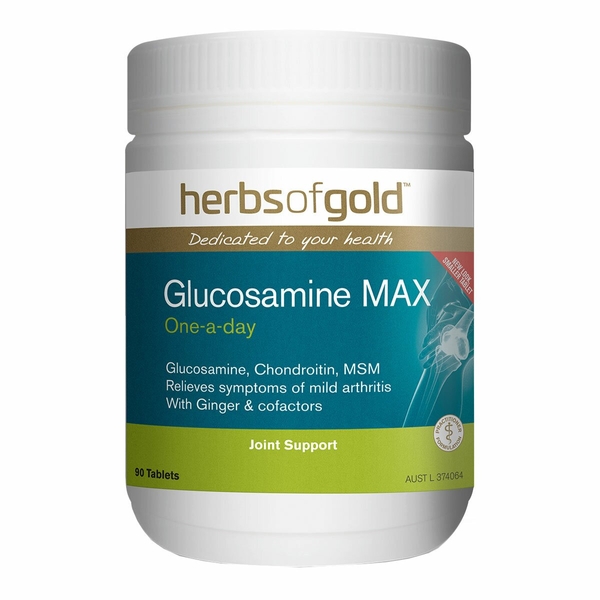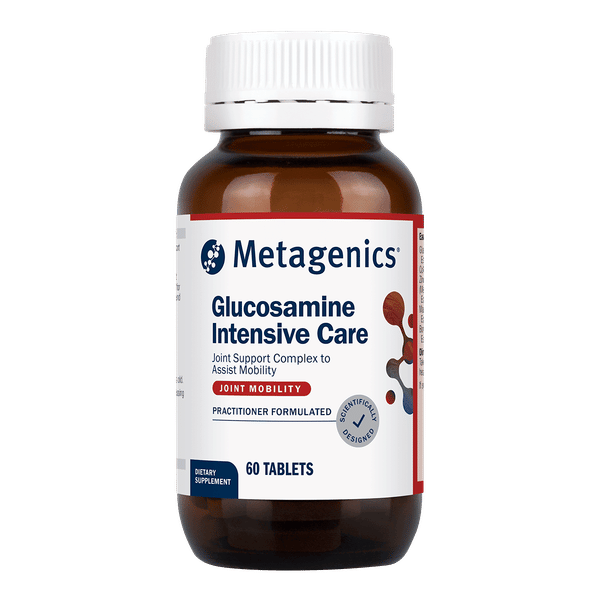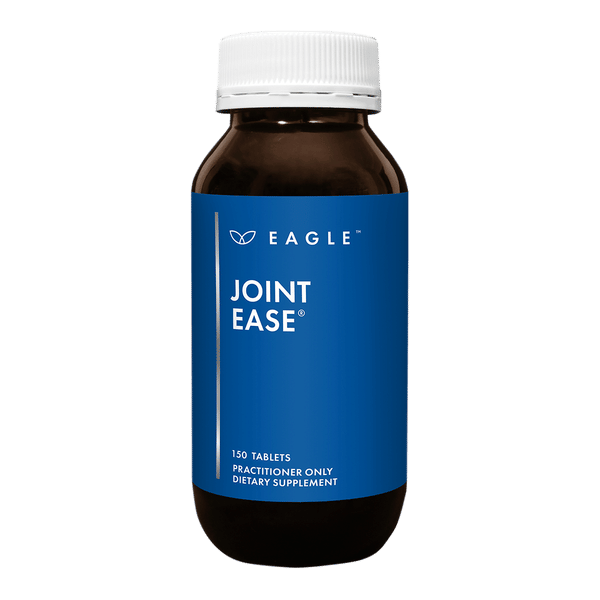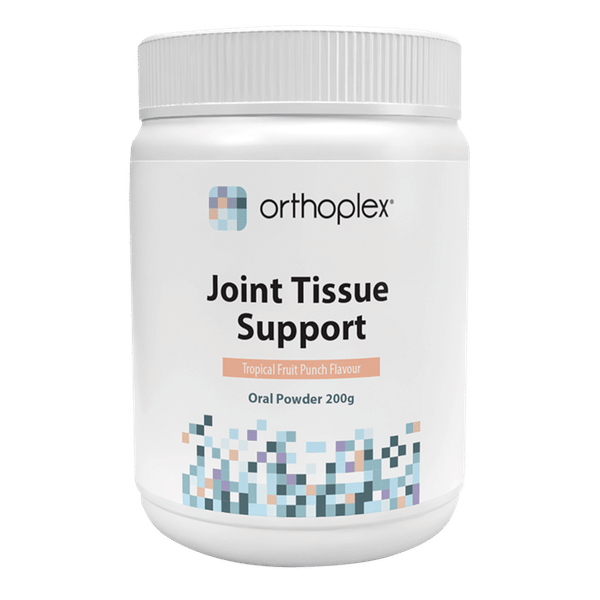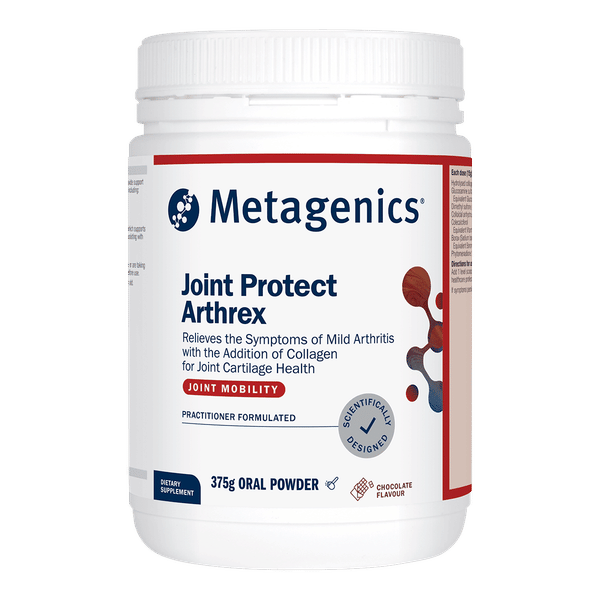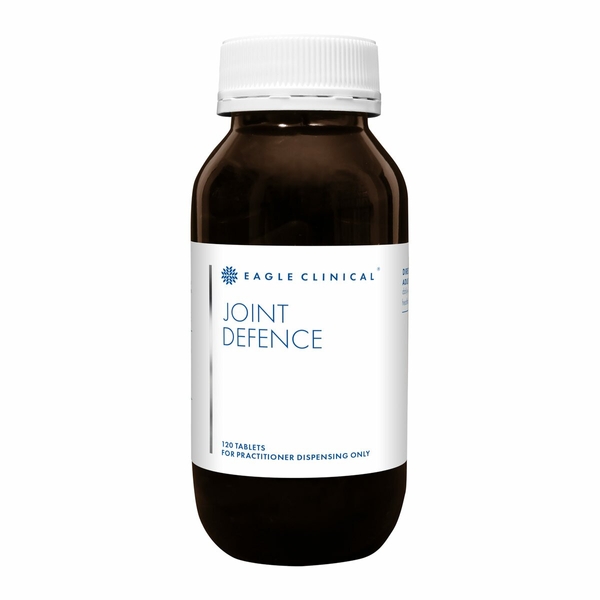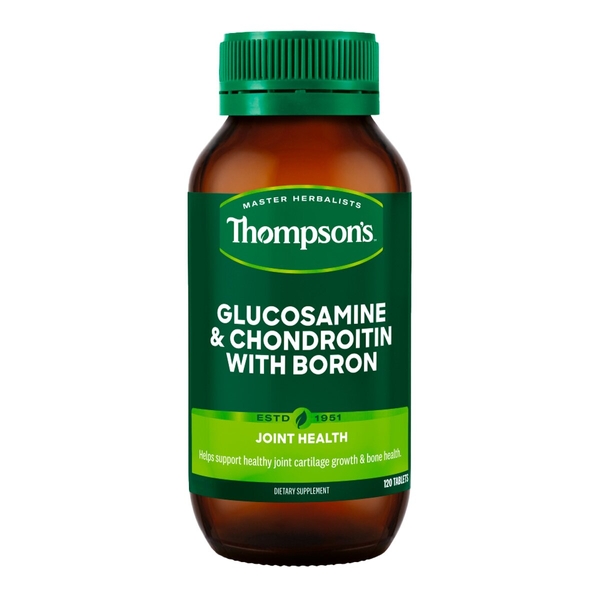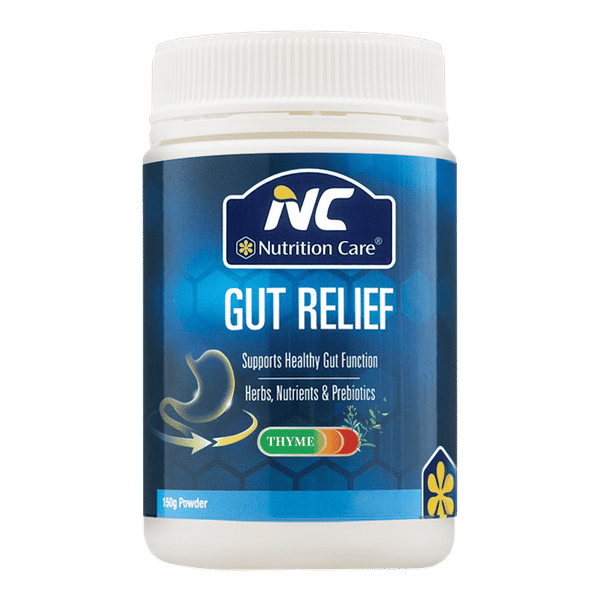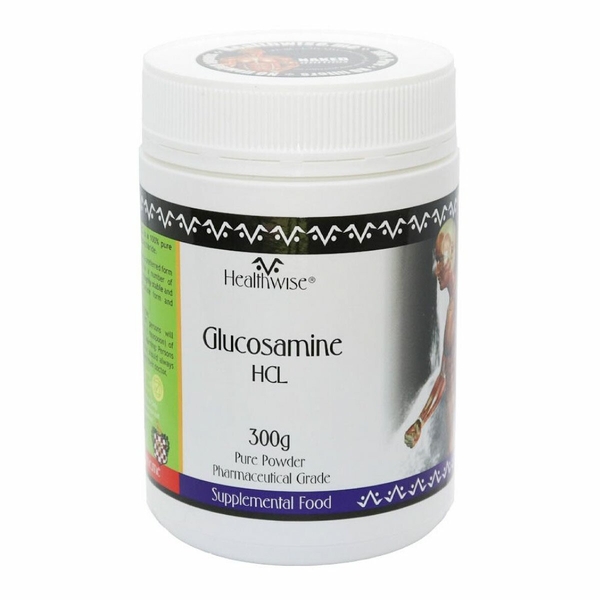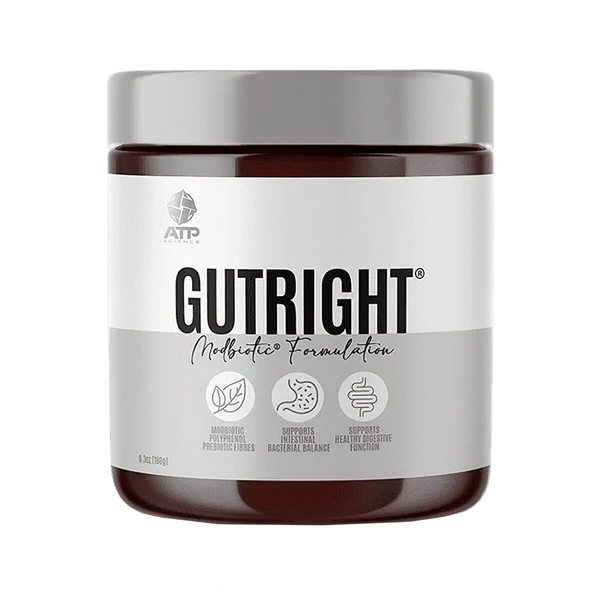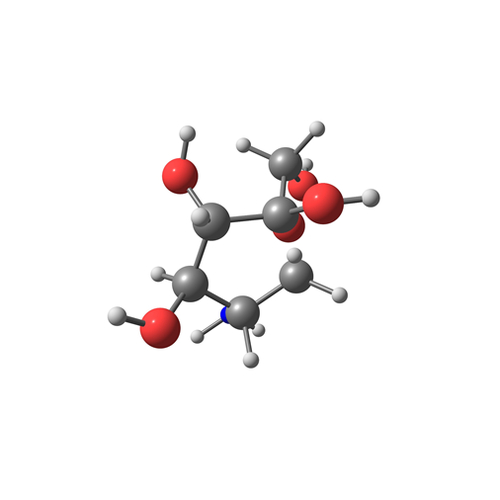
Background
Commonly used for joint disorders, including knee pain, rheumatoid arthritis (RA), osteoarthritis, and Kashin-Beck disease, but there is no strong evidence to support these uses.
Possibly safe when used orally at a total daily dose of 1400-1600 mg. Side effects appear to be uncommon but may include mild gastrointestinal symptoms.
Taking products containing glucosamine and chondroitin sulfate in combination with warfarin has been reported to increase anticoagulant activity and the risk for bruising and bleeding.
People use this for...
Topically, glucosamine hydrochloride is used in combination with chondroitin sulfate, shark cartilage, and camphor for osteoarthritis.
Parenterally, glucosamine hydrochloride is used short-term for reducing the symptoms of osteoarthritis.
Safety Safety definitions
Possibly Safe ...when used orally and appropriately. Glucosamine hydrochloride has been used with apparent safety at a dose of 1400-1600 mg daily for up to 2 years (1520,4237,13579,14809,18344,42477,89516,89519,95784). Glucosamine hydrochloride 2 grams daily has also been used with apparent safety for up to 3 weeks (103281).
Pregnancy And Lactation: Insufficient reliable information available; avoid using.
Effectiveness Effectiveness definitions
INSUFFICIENT RELIABLE EVIDENCE TO RATE
Cardiovascular disease (CVD). Observational research of adults in the United Kingdom found that taking glucosamine is associated with an overall 15% reduced risk for fatal and non-fatal CVD events, including coronary heart disease and stroke (99682). However, this study did not clarify the form of glucosamine used, or the dose, frequency, or duration of use. Furthermore, the adults that reported glucosamine use also reported overall healthier lifestyle habits than those that were not taking glucosamine. Although this study attempted to control for these differences, higher quality, prospective research is needed to clarify the relationship, if any, between glucosamine hydrochloride and CVD risk.
Depression. A preliminary, open-label trial in a small number of patients with unipolar depression shows that taking glucosamine hydrochloride 1 gram daily for 1 week, followed by 2 grams daily for 3 weeks, reduces scores on the Hamilton Rating Scale for Depression (HAM-D) and Montgomery-Asberg Depression Rating Scale (MADRS) by 31% or 33% when compared to baseline. However, only 20% of patients experienced a 50% or greater reduction in HAM-D scores, and significant improvements in Clinical Global Impression scores were lacking (103281). A lack of control group limits the validity of these findings.
Diabetes. Observational research in adults in the United Kingdom has found that glucosamine use is associated with a 17% lower risk of type 2 diabetes. The relationship between glucosamine use and diabetes appears to be even more pronounced in patients with high baseline levels of C-reactive protein, a marker of inflammation (103234). However, this study did not clarify the form of glucosamine used, or the dose, frequency, or duration of use. Furthermore, the adults that reported glucosamine use also reported overall healthier lifestyle habits than those who were not taking glucosamine. Although this study attempted to control for these differences, higher quality, prospective research is needed to clarify the relationship, if any, between glucosamine hydrochloride and the risk for diabetes.
Hyperlipidemia. Preliminary clinical research shows that glucosamine hydrochloride does not reduce cholesterol or triglyceride levels in patients with hyperlipidemia. A study in older adults taking an HMG-CoA reductase inhibitor used a specific glucosamine hydrochloride product (Artrox, Pfizer) 750 mg twice daily for 4 weeks. There was no effect on triglycerides or total, high-density lipoprotein (HDL), or low-density lipoprotein (LDL) cholesterol levels (18341).
Kashin-Beck Disease. Preliminary clinical research shows that glucosamine hydrochloride in combination with chondroitin sulfate may improve pain and physical function in adults with Kashin-Beck Disease, a joint-destructive condition that occurs primarily in China. One study shows that taking glucosamine hydrochloride 480 mg three times daily along with chondroitin sulfate 600 mg twice daily for 6 months seems to decrease pain scores compared with placebo (42516). The effects of taking glucosamine hydrochloride as a monotherapy are mixed. Some evidence shows that taking glucosamine hydrochloride 480 mg three times daily for 6 months does not seem to decrease pain scores compared with placebo in patients with Kashin-Beck Disease (42516). However, other research shows that taking glucosamine hydrochloride 750 mg twice daily for 6 weeks relieves pain and improves physical function similarly to diclofenac or naproxen (18339). A reason for the discrepancy may be the difference in dosing regimen.
Knee pain. One preliminary clinical study shows that taking glucosamine hydrochloride 2000 mg orally once daily for 12 weeks might provide some subjective improvement in knee pain when taken by people who have regularly occurring knee pain of unspecified origin (10312). However, other clinical research shows that taking a supplement containing glucosamine hydrochloride and other ingredients for 16 weeks does not improve pain, function, or walking speed compared to placebo in Japanese patients with knee pain. The daily dose of this supplement provided glucosamine hydrochloride 1200 mg, chondroitin sulfate 60 mg, type II collagen peptides 45 mg, quercetin glycosides 90 mg, imidazole peptides 10 mg, and vitamin D 200 IU (95784). Reasons for discrepancy may relate to differences in supplement formulations and dosages, as well as differences in knee pain severity at baseline.
Osteoarthritis. There is conflicting evidence about the effectiveness of glucosamine hydrochloride for osteoarthritis. Most clinical research shows that glucosamine hydrochloride, when used alone, is not effective for the management of osteoarthritis (18334,89519,89521). However, some studies have shown benefit when glucosamine hydrochloride is used in combination with other ingredients. Some clinical research shows that the use of a specific combination product (Cosamin DS, Nutramax Laboratories) that also contains chondroitin sulfate and manganese ascorbate improves measures of pain in people with osteoarthritis (4237,7169). When other products containing only glucosamine hydrochloride and chondroitin sulfate are used, however, the evidence for benefit is conflicting (13579,14809,42477,89516). These inconsistent findings might be due to differences in disease severity at baseline, as well as variability in study and product quality. Some studies utilize supplement products, while others use pharmaceutical-grade formulations that are not available in the US. The American College of Rheumatology (ACR) recommends against the use of glucosamine for any form of osteoarthritis (102114). Clinical research on the use of glucosamine hydrochloride in osteoarthritis primarily involves a specific combination product that contains glucosamine hydrochloride, chondroitin sulfate, and manganese ascorbate (Cosamin DS, Nutramax Laboratories). Some evidence shows that this combination can improve both objective and subjective measures of pain in patients with osteoarthritis of the knee (4237,7169). This combination might be more effective in patients with mild-to-moderate osteoarthritis compared to patients with severe knee osteoarthritis (7169). A different combination product (Gurukosamin & Kondoroichin, Suntory Wellness Ltd.) containing glucosamine hydrochloride 1200 mg, chondroitin sulfate 60 mg, and quercetin glycosides 45 mg, taken daily for 16 weeks, also seems to improve symptoms of knee osteoarthritis (42514). Other research has assessed the effects of preparations containing only glucosamine hydrochloride plus chondroitin sulfate. Some research shows that taking a noncommercial preparation of glucosamine hydrochloride 500 mg three times daily in combination with chondroitin sulfate 400 mg three times daily for up to 2 years does not reduce overall pain in patients with osteoarthritis of the knee, although the combination does seem to be beneficial for reducing pain in a subgroup of patients with moderate-to-severe osteoarthritis of the knee (13579,42477). However, the validity of this research is in question due to a very high placebo response rate of about 60%. In another trial, taking glucosamine hydrochloride 1500 mg and chondroitin sulfate 1200 mg daily for 6 months to one year also does not improve pain or physical function when compared with placebo in older adults with knee osteoarthritis (14809). However, results from one clinical trial show that taking a specific product (Droglican, Bioiberica S.A.) containing glucosamine hydrochloride 500 mg plus chondroitin sulfate 400 mg three times daily for 6 months is non-inferior to celecoxib 200 mg daily for relieving pain, but not stiffness, joint swelling, or joint function, in adults with knee osteoarthritis (89516). One reason for the conflicting results may be the formulation used. Droglican, the product used in the study that showed beneficial effects on pain, is a prescription-only medication in Spain. Therefore, the results obtained using this product may not be generalizable to other products sold as dietary supplements in the US or UK. Also, the severity of osteoarthritis at baseline may have influenced results. Most evidence from studies that included a placebo control suggests that glucosamine hydrochloride is not effective for treating osteoarthritis when used as a single agent. One study suggests that taking glucosamine hydrochloride 500 mg three times daily for 8 weeks might reduce some subjective assessments of pain but does not seem to reduce objective measures of pain in patients with knee osteoarthritis (1520). Other research shows that using glucosamine hydrochloride 1500 mg daily in combination with an exercise regimen for 18 months is no more effective than exercise alone for reducing pain or improving knee function in patients with knee osteoarthritis (18344). Additional research shows that taking glucosamine hydrochloride (Regenasure, Cargill) 1500 mg daily for 24 weeks does not attenuate the worsening of cartilage damage or improve pain when compared with placebo in patients with chronic knee pain associated with knee osteoarthritis (89519). A meta-analysis of clinical research also shows that taking glucosamine hydrochloride is not effective for reducing pain in patients with knee osteoarthritis (89521). There is some debate about whether glucosamine hydrochloride is less effective than glucosamine sulfate. One head-to-head clinical study comparing the sulfate and hydrochloride salts of glucosamine daily for 4 weeks showed no difference between the two forms of glucosamine for reducing symptoms or osteoarthritis severity in patients with knee osteoarthritis (13718). Another comparative study showed no difference between glucosamine hydrochloride 750 mg twice daily and glucosamine sulfate 500 mg three times daily when taken for 12 weeks by patients with knee osteoarthritis (20095). However, this glucosamine hydrochloride product also contained boswellic acid and bromelain, while the glucosamine sulfate was combined with potassium chloride. Another study compared the effects of a specific formulation (Artrolive, Aché Laboratórios Farmacêuticos S.A.) containing chondroitin sulfate 400 mg and glucosamine sulfate 500 mg with another specific formulation (Cosamin DS, Nutramax Laboratories) containing chondroitin sulfate 400 mg and glucosamine hydrochloride 500 mg. When either treatment was taken three times daily for 16 weeks, results from the study showed no between-group differences in pain reduction or disease activity in patients with knee osteoarthritis (89520). While these results suggest that glucosamine sulfate and glucosamine hydrochloride might have similar effects, most research assessing glucosamine sulfate has shown positive effects, while most research assessing glucosamine hydrochloride has shown no benefit (94382). Additionally, the findings from these comparator studies are limited by the variable products used and the lack of a placebo group.
Rheumatoid arthritis (RA). Preliminary clinical research shows that taking glucosamine hydrochloride tablets (Rohto Pharmaceutical Co.) 500 mg three times daily by mouth for 12 weeks reduces rheumatoid arthritis-related pain compared to placebo. However, there does not seem to be an improvement in the number of painful or swollen joints or markers of inflammation such as C-reactive protein and erythrocyte sedimentation rate (17407).
Stroke. Observational research of adults in the United Kingdom found that taking glucosamine is associated with a modest 9% reduced risk for overall stroke; however, sub-analyses show that glucosamine use is not associated with a reduced risk for fatal or non-fatal stroke, hemorrhagic stroke, or ischemic stroke (99682). This study did not clarify the form of glucosamine used, or the dose, frequency, or duration of use. Furthermore, the adults that reported glucosamine use also reported overall healthier lifestyle habits than those that were not taking glucosamine. Although this study attempted to control for these differences, higher quality, prospective research is needed to clarify the relationship, if any, between glucosamine hydrochloride and stroke risk.
Temporomandibular disorder (TMD). Preliminary clinical research shows that a combination of glucosamine hydrochloride 1600 mg, chondroitin sulfate 1200 mg, and calcium ascorbate 1000 mg, taken twice daily for 3 months, reduces temporomandibular joint noise in up to 80% patients with TMJ osteoarthritis. Some patients also report improvements in pain and swelling (18340). More evidence is needed to rate glucosamine hydrochloride for these uses.
Natural Medicines rates effectiveness based on scientific evidence according to the following scale: Effective, Likely Effective, Possibly Effective, Possibly Ineffective, Likely Ineffective, Ineffective, and Insufficient Evidence to Rate.
Dosing & administration
Standardization & formulationIn general, glucosamine hydrochloride 750 mg is equivalent to 625 mg of glucosamine (18341). An analysis of 14 glucosamine hydrochloride products commercially available in the US found that actual content versus labelled content varies from 0% to 115% (8128). An analysis of 25 glucosamine and chondroitin supplement products available in Europe found that more than half of the tested products contained less than 90% of the labelled content (102116).
Glucosamine hydrochloride products used in clinical research that contain glucosamine hydrochloride as a single agent have included Regenasure (Cargill) (89519), Artrox (Pfizer) (18341), and glucosamine hydrochloride tablets (Rohto Pharmaceutical Co) (17407).
Combination products used in clinical research have included Cosamin DS (Nutramax Laboratories), which contains chondroitin sulfate 400 mg/capsule and glucosamine hydrochloride 500 mg/capsule (89520); Droglican (Bioiberica S.A.), which contains glucosamine hydrochloride 500 mg plus chondroitin sulfate 400 mg (89516); and Gurukosamin & Kondoroichin (Suntory Wellness Ltd.), which contains glucosamine hydrochloride 1200 mg, chondroitin sulfate 60 mg, and quercetin glycosides 45 mg (42514).
Adverse effects
Hepatic: Of 151 patients at an outpatient clinic for liver diseases, 23 acknowledged use of products containing glucosamine (form unspecified) and/or chondroitin. In 21 of those patients an elevation of aminotransferase levels above usual values was not seen. However, in 2 cases, there was a relationship between transaminase elevation and glucosamine use. In one case the elevation was 5- to 7-fold, returning to usual values after discontinuation of glucosamine use. In the second case, the elevation was 4-fold, and testing ruled out other causes. Glucosamine and chondroitin products had been consumed at recommended doses in all cases (89515). A case of acute cholestatic hepatitis due to Glucosamine Forte, which contains glucosamine hydrochloride, chondroitin sulfate, Devil's claw, and shark cartilage, has been reported (89522).
Immunologic: There is some concern that glucosamine products might cause allergic reactions in sensitive individuals. One review of glucosamine-related adverse events in Australia found that 72% of all reports involved hypersensitivity reactions. Of these reactions, 35% were mild, including pruritis, urticaria, and lip edema, 49% were moderate, including dyspnea, and 16% were severe, including gait disturbance, somnolence, and hypotension. Anaphylaxis was reported in 1.5% of cases (102115). Also, in one clinical trial, a single patient developed allergic dermatitis considered to be likely due to glucosamine hydrochloride (89516). Glucosamine is derived from the exoskeletons of shrimp, lobster, and crabs. However, it is unclear if these adverse reactions were due to a shellfish sensitivity or general atopy. Additionally, shellfish allergies are caused by IgE antibodies to antigens in the meat of shellfish, not to antigens in the exoskeleton. Regardless, it is possible that some glucosamine products might be contaminated by this allergen during production (102115).
Gastrointestinal: Orally, glucosamine hydrochloride can cause mild gastrointestinal (GI) symptoms such as gas, abdominal bloating, and cramps (1520). In a clinical trial, a case of Helicobacter pylori gastritis was considered probably related to the use of glucosamine hydrochloride (89516).
Dermatologic: Photosensitization that was reproducible with re-challenge was reported in a case report of an individual using glucosamine (form unknown) and chondroitin (10408).
Other: There has been concern that glucosamine might increase the risk of metabolic disturbances resulting in increased cholesterol levels and blood pressure. However, glucosamine does not appear to increase the risk of these adverse effects. Taking glucosamine for up to 3 years does not significantly increase blood glucose or lipid levels, or cause any other disturbances in metabolism (7026,7075,8942,10311,10317).
Renal: Anecdotal reports have associated glucosamine with renal toxicity, but changes in renal function have not been reported in long-term studies (7026,8942,10408,10409). Also, four cases of 1+ to 2+ proteinuria in patients receiving glucosamine (form unknown) and chondroitin have been reported (10408). However, it was noted that effects may have been due to other concurrent medications or impurities in glucosamine-chondroitin products. Cases of acute interstitial nephritis induced by glucosamine (form unknown) have also been reported (89523).
Endocrine: Elevated blood glucose levels in patients with diabetes have been reported (22). However, taking glucosamine for up to 3 months does not seem to affect hemoglobin A1C or blood glucose levels in healthy or obese people or patients with type 2 diabetes (10311,10317,12107,15111).
General: Orally, glucosamine hydrochloride seems to be well tolerated; adverse effects have been rarely reported in clinical trials when glucosamine hydrochloride is used with or without chondroitin sulfate. Many studies report that adverse effects are not more common when compared with placebo or other comparison groups (13718,18339,42477,42516). However, glucosamine hydrochloride might cause mild gastrointestinal symptoms such as gas, abdominal bloating, and cramps (1520). Also, there is concern that glucosamine products can cause allergic reactions (89516,102115). One review of glucosamine-related adverse reactions reported in Australia found that 72% of all reports involved hypersensitivity reactions. Glucosamine is derived from the exoskeletons of shrimp, lobster, and crabs. However, it is not clear if these reactions were due to shellfish sensitivity or general atopy (102115).
Cardiovascular: In a clinical trial, mesenteric occlusion was considered possibly related to use of glucosamine hydrochloride and chondroitin sulfate (89520).
Pulmonary/Respiratory: There are reported cases suggesting a link between glucosamine (form unknown)-chondroitin products and asthma exacerbations (10002).
Neurologic/CNS: Glucosamine plus chondroitin combination products that also contain manganese (e.g., CosaminDS) should always be taken according to product directions. When taken at doses slightly higher than the recommended dose, these products can sometimes supply greater than the tolerable upper limit (UL) for manganese which is 11 mg/day. Ingestion of more than 11 mg/day of manganese might cause significant central nervous system toxicity (7135).
Musculoskeletal: Three cases of modestly elevated creatine phosphokinase (1-2 times above the upper limit) have been reported for patients receiving glucosamine (form unknown) and chondroitin (10408). However, it was noted that effects may have been due to other concurrent medications or impurities in glucosamine-chondroitin products.
Toxicology
Interactions with pharmaceuticals
WARFARIN (Coumadin)Interaction Rating: Major Do not take this combination.Severity: High Occurrence: Probable Level of evidence: DTaking glucosamine alone or in combination with chondroitin might increase the anticoagulant effects of warfarin (Coumadin) and increase the risk of bruising and bleeding. In one case, a 71 year-old man taking warfarin had his international normalized ratio (INR) increase from 2.3 to 4.7 after increasing the dose of a glucosamine-chondroitin supplement from glucosamine hydrochloride 500 mg and chondroitin sulfate 400 mg to glucosamine hydrochloride 1500 mg and chondroitin sulfate 1200 mg daily (16130). In another case, very high-dose glucosamine hydrochloride (3000 mg/day) plus high-dose chondroitin sulfate (2400 mg/day) combined with warfarin resulted in a significantly increased INR (11389). Additionally, 20 voluntary case reports to the U.S. Food & Drug Administration (FDA) have linked glucosamine plus chondroitin with increased INR, bruising, and bleeding events in patients who were also taking warfarin (16130). There have also been 20 additional case reports to the World Health Organization (WHO) that link glucosamine alone to increased INR in patients taking warfarin (16131).
Chondroitin is a small component of a heparinoid and might have weak anticoagulant activity. Glucosamine is also a small component of heparin, but is not thought to have anticoagulant activity. However, preliminary evidence from animal research suggests that it might have antiplatelet activity (16131).
Patients taking warfarin should be advised to avoid using glucosamine.
TOPOISOMERASE II INHIBITORSInteraction Rating: Moderate Be cautious with this combination.Severity: High Occurrence: Possible Level of evidence: DIn vitro research suggests that glucosamine might induce resistance to etoposide (VP16, VePesid) and doxorubicin (Adriamycin) by reducing the drugs' inhibition of topoisomerase II, an enzyme required for DNA replication in tumor cells (7639). Glucosamine hydrochloride is one form of glucosamine. Theoretically glucosamine hydrochloride may induce resistance to other chemotherapeutic agents that work by inhibiting topoisomerase II. Some topoisomerase II inhibitors include etoposide (VP16, VePesid), teniposide (VM26), mitoxantrone, and anthracyclines such as doxorubicin (Adriamycin) and daunorubicin.
ANTIDIABETES DRUGSInteraction Rating: Minor Be watchful with this combination.Severity: Moderate Occurrence: Unlikely Level of evidence: BIn vitro and animal research has shown that glucosamine might increase insulin resistance or decrease insulin production (371,372,3406,18342,18343). This has raised concerns that taking glucosamine hydrochloride, a specific form of glucosamine, might worsen diabetes and decrease the effectiveness of diabetes drugs. However, clinical research suggests that taking glucosamine as glucosamine hydrochloride or glucosamine sulfate does not have adverse effects on blood glucose or hemoglobin A1C (HbA1C) in healthy, obese, or type 2 diabetes patients (7026,7075,8942,10311,10317,15111). Some antidiabetes drugs include glimepiride (Amaryl), glyburide (DiaBeta, Glynase PresTab, Micronase), insulin, pioglitazone (Actos), rosiglitazone (Avandia), and others.
Interactions with herbs & supplements
Clinical research shows that taking a single dose of chondroitin sulfate in combination with glucosamine hydrochloride reduces the maximal blood concentration (Cmax) of glucosamine. When a single dose of glucosamine hydrochloride is taken following 3 months of combined glucosamine hydrochloride and chondroitin sulfate supplementation, the Cmax is not affected; however, the AUC is reduced (42444). Theoretically, concomitant use of glucosamine hydrochloride and chondroitin sulfate may reduce the absorption of glucosamine hydrochloride.
Interactions with foods
None known.
Interactions with lab tests
None known.
Interactions with diseases
ASTHMA: Glucosamine might exacerbate asthma by an unidentified allergic mechanism. Use glucosamine hydrochloride cautiously in patients with asthma (10002).
DIABETES: Some preliminary research has raised concerns that glucosamine might increase insulin resistance or decrease insulin production, resulting in elevated blood glucose levels (5059,14810,18342,18343). There are also anecdotal reports of reduced blood glucose control in people with diabetes who take glucosamine (22,1203,1204,3405,3406). However, clinical studies show that glucosamine does not adversely affect blood glucose control in people with type 2 diabetes, as measured by hemoglobin A1C (10311,10317,14808). It also does not seem to affect blood glucose in healthy or obese people who take glucosamine for up to 3 years (7026,8942,12107,15111).
GLAUCOMA: There is some concern that taking glucosamine hydrochloride might increase intraocular pressure in patients with glaucoma. Two retrospective chart analyses found that patients with poorly controlled glaucoma who discontinued glucosamine experienced a decrease in intraocular pressure of about 3 mmHg compared to baseline (89573,94623). A clinical study also found that some patients taking glucosamine sulfate 750 mg three times daily for 3 months had a significantly increased intraocular pressure. About 34% of patients who took this dose of glucosamine hydrochloride experienced a clinically meaningful increase in intraocular pressure of at least 2 mmHg compared to only about 13% of patients taking placebo (94624). Patients with severe glaucoma should avoid glucosamine hydrochloride. Patients with mild-to-moderate glaucoma should be monitored for changes in intraocular pressure within 3 months of starting glucosamine. If intraocular pressure increases, glucosamine hydrochloride may need to be discontinued.
HYPERLIPIDEMIA: There has been concern that glucosamine might cause metabolic disturbances that could results in increased cholesterol and triglyceride levels. Some preliminary research has suggested that glucosamine might increase insulin levels. Hyperinsulinemia is associated with elevated cholesterol and triglyceride levels (5059,7075). Evidence from animal research has also shown that glucosamine might exacerbate hyperlipidemia (15110). However, research in humans has not shown this effect. Glucosamine does not seem to increase lipid levels in people over the age of 45 years who take glucosamine sulfate for up to 3 years (7026,8942).
HYPERTENSION: There has been concern that glucosamine might cause metabolic disturbances resulting in increased blood pressure. Some preliminary research has suggested that glucosamine might increase insulin levels. Hyperinsulinemia is associated with elevated blood pressure (5059,7075). However, research in humans has not shown this effect. Glucosamine does not seem to increase blood pressure in people over the age of 45 years who take glucosamine sulfate for up to 3 years (7026,8942).
SHELLFISH ALLERGY: There is concern that glucosamine products might cause allergic reactions in people who are sensitive to shellfish. Glucosamine is derived from the exoskeletons of shrimp, lobster, and crabs. Allergic reactions in people with shellfish allergy are caused by IgE antibodies to antigens in the meat of shellfish, not to antigens in the exoskeleton. However, a review of glucosamine-related adverse events in Australia found that 72% of all reports involved hypersensitivity reactions. It is not clear from this report if these patients had a shellfish allergy; however, the reactions were similar to those seen in shellfish allergy. It is possible that allergen contamination can occur during the manufacture of some glucosamine products (102115).
SURGERY: Glucosamine hydrochloride might affect blood glucose levels. Theoretically, glucosamine hydrochloride might interfere with blood glucose control during and after surgical procedures. Tell patients to discontinue glucosamine hydrochloride at least 2 weeks before elective surgical procedures.
Mechanism of action
General: Glucosamine hydrochloride is one of the salt forms of glucosamine. Other salt forms are also available including glucosamine sulfate and N-acetyl glucosamine. Although glucosamine is administered in a salt form, the salt is likely cleaved off in the stomach. Glucosamine base is completely ionized in the stomach. Laboratory data suggests that glucosamine base, glucosamine hydrochloride, and glucosamine sulfate may be equally active (8128). Glucosamine is usually derived from marine exoskeletons or produced synthetically. Glucosamine is required for the synthesis of glycoproteins, glycolipids, and glycosaminoglycans (also known as mucopolysaccharides) (89513). These carbohydrate-containing compounds are found in tendons, ligaments, cartilage, synovial fluid, mucous membranes, structures in the eye, blood vessels, and heart valves. Glucosamine stimulates metabolism of chondrocytes in the articular cartilage and synovial cells in the synovial tissues. Glucosamine is also a component of biologically active compounds such as heparin, but it does not react with heparin-induced thrombocytopenia (HIT) antibodies (7640,7641,11831).
Antiarthritic effects: As sulfate is required for articular cartilage glycosaminoglycan synthesis, some researchers think the sulfate moiety in glucosamine sulfate might be responsible for its effect on osteoarthritis and the additional glucosamine might increase the absorption of sulfate. It has been shown that glucosamine sulfate increases serum and synovial sulfate levels. However, acetaminophen given concurrently with glucosamine sulfate, decreases sulfate levels, suggesting that use of acetaminophen in clinical trials might alter results. If the sulfate is the active moiety of glucosamine sulfate, theoretically glucosamine hydrochloride would be less effective (10313). More research is needed to determine the role of sulfate in the efficacy of glucosamine sulfate vs. glucosamine hydrochloride for treating osteoarthritis.
In animals, glucosamine has been shown to decrease CTX-II, a marker of type II collagen degradation, and increase CPII, a marker of type II collagen synthesis (89526). In healthy college athletes, taking glucosamine hydrochloride 2000 mg daily within 30 minutes of exercise for 16 weeks decreased serum and urine levels of CTX-II when compared with placebo, indicating suppression of collagen degradation (99686). Also, in mesenchymal stem cells in culture taken from normal donors and patients with arthritis, chondroitin and glucosamine have been shown to enhance chondrogenesis (42374). In vitro, glucosamine appears to increase the expression of the cartilage-specific genes aggrecan and collagen type II, reducing collagen type I mRNA in chondrocytes; the IL-1beta-induced shift in gene expression was also antagonized (89544). These changes may result in decreased cellular proliferation and development of chondrocyte-specific cell morphology. In cartilage explant cultures, glucosamine stimulated the loss of small proteoglycans from ligament explant cultures but was without an effect in joint capsule or tendon or on large proteoglycan catabolism in ligament, tendon, or synovial capsule (89545).
Anticancer effects: Evidence from epidemiological research suggests that any use of glucosamine (salt type not specified) over a 10-year time interval is associated with a 26% reduced risk of lung and a 28% reduced risk of colorectal cancer (89524). Potential anti-cancer mechanisms of action are not clear. However, they may include inhibited cross-linking activity of transglutaminase-2 and reversed transglutaminase-2-mediated NF-kappaB polymerization (89529), inhibition of IL-1beta mediated IL-8 production by inhibition of MAP kinase (89530), STAT3 signaling (89531), protein translation (89532), and stimulation of autophagic cell death through the endoplasmic reticulum stress manifested by the induction of BiP, IRE1alpha, and phospho-eIF2alpha expression (89533).
Anti-inflammatory effects: Glucosamine itself has been shown to have anti-inflammatory effects in animal and in vitro models (89526,89534,89535). Possible mechanisms of action have been explored in vitro and in animal models and include decreased expression of IL-1beta in an NF-kappaB-dependent manner (89537), inhibition of lipopolysaccharide-mediated phosphorylation of JNK and ERK (89538), downregulated cyclooxygenase-2 and MMP-13 expression in IL-1beta- or PMA-treated cells (89539), inhibition of mast cell degranulation (89534), and increase in hyaluronic acid production (89540). Other mechanisms of action, as shown in vitro, include noncompetitive inhibition of basal glucose transport, membrane translocation of GLUT1 and 6 (and not GLUT3), and hyaluronan and SGAG synthesis (89541), as well as inhibition of NF-kappaB by inhibiting IKK kinase activity (89542) and involvement of the p38 MAPK and Akt signaling pathways (89543).
Cardiovascular effects: In vitro, glucosamine hydrochloride appears to suppress TNF-alpha-induced and LL-37-induced expression of MCP-1 and ICAM-1 mRNA and proteins, as well as reduce the phosphorylation of p38MAPK and NF-kappaB in endothelial cells (89546,89548). This suggests that glucosamine hydrochloride may reduce endothelial cell activation, which theoretically may reduce the formation of atherosclerotic plaque.
Gastrointestinal effects: In an animal colitis model, glucosamine hydrochloride appears to inhibit the dextran sulfate sodium-induced activation of intestinal epithelial cells; the inhibition of NF-kappaB was implicated (89535). Also, in human colonic epithelial HT-29 cells, glucosamine hydrochloride appears to inhibit IL-8 production and ICAM-1 expression following TNF-alpha stimulation, as well as TNF-alpha-induced phosphorylation of p38MAPK and NF-kappaB p65, and the nuclear translocation of NF-kappaB in the cells (89550). These results suggest that the anti-inflammatory effects of glucosamine hydrochloride may theoretically be useful for reducing inflammation associated with conditions such as inflammatory bowel disease.
There is also interest in using glucosamine hydrochloride to modify the gut microbiota. A small clinical study in 11 healthy volunteers shows that taking glucosamine hydrochloride 1500 mg and chondroitin sulfate 1200 mg daily for 14 days does not affect the concentration or quantity of the seven most common bacterial phyla found in the gut; however, it might alter the quantity of some bacterial genera when compared with placebo. It is unclear if these changes would affect gut health (102117).
Glucose effects: The effects of glucosamine on insulin resistance and serum glucose levels have been controversial and there has been concern about potential adverse metabolic effects of glucosamine. In human research, some preliminary research has raised concerns that glucosamine might increase insulin resistance or decrease insulin production, resulting in elevated blood glucose levels (5059,14810,18342,18343). However, there are also anecdotal reports of reduced blood glucose control in people with diabetes who take glucosamine (22,1203,1204,3405,3406). Also, some clinical studies have shown that glucosamine does not adversely affect blood glucose control in people with type 2 diabetes, as measured by hemoglobin A1C (10311,10317,14808). It also does not seem to affect blood glucose in healthy or obese people who take glucosamine for up to 3 years (7026,7637,7638,8942,10311,10317,12107,15111).
Preliminary evidence suggests that glucosamine might decrease glucose-induced insulin secretion by inhibiting pancreatic glucokinase in the beta cells of the islet of Langerhans (371,372,3406). Other preliminary research suggests that glucosamine might also impair insulin-mediated glucose uptake and metabolism in skeletal muscle (372,3406). Animal research suggests glucosamine might increase glucose metabolism through the hexosamine pathway, a pattern of change in glucose metabolism similar to that seen in type 2 diabetes (3405,3406). However, animals may handle glucosamine differently than humans. Some researchers think that increased glucosamine production might contribute to endothelial cell dysfunction (8944). In murine pancreatic beta cells, glucosamine induced apoptosis, and this was correlated with enhanced O-GlcNAc modification of Akt1 and concomitant reduction in Ser473 phosphorylation (89551). Glucosamine increased the O-GlcNAc glycosylation of FoxO1 in HEK293 cells, increasing its transcriptional activity (89527,89528). This has been suggested to play a role in glucotoxicity. In vitro in myotubes, glucosamine-induced endoplasmic reticulum stress caused insulin resistance and impaired GLUT4 production and insulin-induced glucose uptake by an ATF6-dependent mechanism involving a decrease of the GLUT4 regulators MEF2A and PGC1-alpha (89552).
Immunological effects: In animal research, glucosamine improved atopic dermatitis-like skin lesions by inhibiting Th2 cell development. Glucosamine also reduced infiltrated inflammatory mast cells and eosinophils, and levels of serum IgE and Th2 cytokines in spleen cells were reduced. In cell cultures, Th2 cytokines, such as IL-4 and IL-5, significantly decreased after administration of glucosamine (85948).
Lipid effects: Animal models suggest that glucosamine might exacerbate the hyperlipidemia caused by a high-fat Western diet (15110). In contrast, evidence from in vitro research suggests that glucosamine-induced endoplasmic reticulum stress attenuates apolipoprotein B100 synthesis via PERK signaling in hepatic cells (89547).
Ophthalmic effects: Glucosamine has been investigated as a potential agent for the prevention and treatment of retinal pigment epithelial-mediated ocular proliferative disorders in vitro. In retinal pigment epithelial cells, glucosamine inhibits epidermal growth factor-induced proliferation and cell-cycle progression (89553). Delays at the G(1)-S and G(2)-M transitions have been noted. Glucosamine modulates the level and branching of N-glycans on epidermal growth factor receptor (EGFR), suppresses the phosphorylation of EGFR, and reduces phosphorylation of both the extracellular signal-regulated kinases and the serine/threonine protein kinase. Reduced phosphorylation of the signal transducer and activator of transcription 3 (STAT3) also occur.
Pharmacokinetics
Absorption: In adult men, two glucosamine hydrochloride products were tested, with a Cmax of 907.01 ng/mL vs. 944.40 ng/mL, Tmax of 3.03 hours vs. 3.30 hours, area under the curve during 12 hours ((AUC(0-12)) of 2,891.41 ng/mL/h vs. 2,889.69 ng/mL/h, and area under the curve from zero to infinity ((AUC(0-infinity)) of 3,029.90 ng/mL/h vs. 3,091.87 ng/mL/h (89554). The 90% confidence interval (Cis) of these products for the log-transformed ratios of Cmax, the area under the plasma concentration time-curve from time zero to the last measurable concentration (AUC(0-t)), and the area under the concentration time-curve from time zero to infinity (AUC(0-infinity)) were 78.4% to 113.9%, 80.8% to 108.5%, and 80.8% to 105.8%, respectively, meeting the predetermined criteria for bioequivalence of the State Food and Drug Administration of China (89554). In a separate study in humans, a single dose of glucosamine hydrochloride resulted in an AUC(0-infinity) of 2380 ng/mL/h, which was above the non-detectable baseline values (42444). The Cmax and Tmax were 492 ng/mL and 2.31 hours, respectively. When taken in combination with chondroitin sulfate, the Cmax was significantly lower; 311 ng/mL vs. 492 ng/mL when glucosamine hydrochloride was given alone. When a single dose of glucosamine hydrochloride is taken following three months of combined glucosamine hydrochloride and chondroitin sulfate supplementation, the Cmax is not affected; however, the AUC is significantly reduced (42444). In horses, after intravenous injection, plasma concentrations of glucosamine reached 50 mcg/mL. After nasogastric administration, plasma concentrations reached 1 mcg/mL (89555). The median oral bioavailability was 6.1%.
Distribution: In horses, the synovial levels of glucosamine were not higher than baseline 12 hours after administration of glucosamine hydrochloride (89555).
Excretion: In adult men, the mean half-life of two oral glucosamine hydrochloride products was 1.10 ± 0.52 hours and 1.50 ± 1.17 hours (89554). Glucosamine is thought to be excreted mainly in the urine (89556). Elimination may be delayed in cases of renal insufficiency (89525).
References
| 1 | Monographs on the medicinal uses of plant drugs. Exeter, UK: European Scientific Co-op Phytother, 1997. |
| 2 | Blumenthal M, ed. The Complete German Commission E Monographs: Therapeutic Guide to Herbal Medicines. Trans. S. Klein. Boston, MA: American Botanical Council, 1998. |
| 22 | Adams ME. Hype about glucosamine. Lancet 1999;354:353-4. View abstract. |
| 371 | Balkan B, Dunning BE. Glucosamine inhibits glucokinase in vitro and produces a glucose-specific impairment of in vivo insulin secretion in rats. Diabetes 1994;43:1173-9. View abstract. |
| 372 | Giaccari A, Morviducci L, Zorretta D, et al. In vivo effects of glucosamine on insulin secretion and insulin sensitivity in the rat: possible relevance to the maladaptive responses to chronic hyperglycaemia. Diabetologia 1995;38:518-24. View abstract. |
| 1203 | Holmang A, Nilsson C, Niklasson M, et al. Induction of insulin resistance by glucosamine reduces blood flow but not interstitial levels of either glucose or insulin. Diabetes 1999;48:106-11. View abstract. |
| 1204 | Kim YB, Zhu JS, Zierath JR, et al. Glucosamine infusion in rats rapidly impairs insulin stimulation of phosphoinositide 3-kinase but does not alter activation of Akt/protein kinase B in skeletal muscle. Diabetes 1999;48:310-20. View abstract. |
| 1520 | Houpt JB, McMillan R, Wein C, Paget-Dellio SD. Effect of glucosamine hydrochloride in the treatment of pain of osteoarthritis of the knee. J Rheumatol 1999;26:2423-30. View abstract. |
| 3405 | Rossetti L, Hawkins M, Chen W, et al. In vivo glucosamine infusion induces insulin resistance in normoglycemic but not in hyperglycemic conscious rats. J Clin Invest 1995;96:132-40. View abstract. |
| 3406 | Shankar RR, Zhu JS, Baron AD. Glucosamine infusion in rats mimics the beta-cell dysfunction of non-insulin-dependent diabetes mellitus. Metabolism 1998;47:573-7. View abstract. |
| 4237 | Leffler CT, Philippi AF, Leffler SG, et al. Glucosamine, chondroitin, and manganese ascorbate for degenerative joint disease of the knee or low back: a randomized, double-blind, placebo-controlled pilot study. Mil Med 1999;164:85-91. View abstract. |
| 5059 | Almada A, Harvey P, Platt K. Effects of chronic oral glucosamine sulfate on fasting insulin resistance index (FIRI) in non-diabetic individuals. FASEB J 2000;14:A750. |
| 7026 | Reginster JY, Deroisy R, Rovati LC, et al. Long-term effects of glucosamine sulfate on osteoarthritis progression: a randomised, placebo-controlled trial. Lancet 2001;357:251-6. View abstract. |
| 7075 | Does glucosamine increase serum lipid levels and blood pressure? Pharmacist's Letter/Prescriber's Letter 2001;17(11):171115. |
| 7135 | Food and Nutrition Board, Institute of Medicine. Dietary Reference Intakes for Vitamin A, Vitamin K, Arsenic, Boron, Chromium, Copper, Iodine, Iron, Manganese, Molybdenum, Nickel, Silicon, Vanadium, and Zinc. Washington, DC: National Academy Press, 2002. Available at: www.nap.edu/books/0309072794/html/. |
| 7169 | Das A Jr, Hammad TA. Efficacy of a combination of FCHG49 glucosamine hydrochloride, TRH122 low molecular weight sodium chondroitin sulfate and manganese ascorbate in the management of knee osteoarthritis. Osteoarthritis Cartilage 2000;8:343-50. View abstract. |
| 7637 | Monauni T, Zenti MG, Cretti A, et al. Effects of glucosamine infusion on insulin secretion and insulin action in humans. Diabetes 2000;49:926-35. View abstract. |
| 7638 | Pouwels MJ, Jacobs JR, Span PN, et al. Short-term glucosamine infusion does not affect insulin sensitivity in humans. J Clin Endocrinol Metab 2001;86:2099-103. View abstract. |
| 7639 | Yun J, Tomida A, Nagata K, Tsuruo T. Glucose-regulated stresses confer resistance to VP-16 in human cancer cells through a decreased expression of DNA topoisomerase II. Oncol Res 1995;7:583-90. View abstract. |
| 7640 | Olszewski AJ, Szostak WB, McCully KS. Plasma glucosamine and galactosamine in ischemic heart disease. Atherosclerosis 1990;82:75-83. View abstract. |
| 7641 | Nowak A, Szczesniak L, Rychlewski T, et al. Glucosamine levels in people with ischaemic heart disease with and without type II diabetes. Pol Arch Med Wewn 1998;100:419-25. View abstract. |
| 8128 | Adebowale AO, Cox DS, Liang Z, et al. Analysis of glucosamine and chondroitin sulfate content in marketed products and the Caco-2 permeability of chondroitin sulfate raw materials. JANA 2000;3:37-44. |
| 8942 | Pavelka K, Gatterova J, Olejarova M, et al. Glucosamine sulfate use and delay of progression of knee osteoarthritis: A 3-year, randomized, placebo-controlled, double-blind study. Arch Intern Med 2002;162:2113-23. View abstract. |
| 8944 | Du XL, Edelstein D, Dimmeler S, et al. Hyperglycemia inhibits endothelial nitric oxide synthase activity by post-translational modification at the Akt site. J Clin Invest 2001;108:1341-8. View abstract. |
| 10002 | Tallia AF, Cardone DA. Asthma exacerbation associated with glucosamine-chondroitin supplement. J Am Board Fam Pract 2002;15:481-4.. View abstract. |
| 10311 | Scroggie DA, Albright A, Harris MD. The effect of glucosamine-chondroitin supplementation on glycosylated hemoglobin levels in patients with type 2 diabetes mellitus: a placebo-controlled, double-blinded, randomized clinical trial. Arch Intern Med 2003;163:1587-90. View abstract. |
| 10312 | Braham R, Dawson B, Goodman C. The effect of glucosamine supplementation on people experiencing regular knee pain. Br J Sports Med 2003;37:45-9. View abstract. |
| 10313 | Hoffer LJ, Kaplan LN, Hamadeh MJ, et al. Sulfate could mediate the therapeutic effect of glucosamine sulfate. Metabolism 2001;50:767-70.. View abstract. |
| 10317 | Yu JG, Boies SM, Olefsky JM. The effect of oral glucosamine sulfate on insulin sensitivity in human subjects. Diabetes Care 2003;26:1941-2. View abstract. |
| 10408 | Danao-Camara T. Potential side effects of treatment with glucosamine and chondroitin. Arthritis Rheum 2000;43:2853. View abstract. |
| 10409 | Guillaume MP, Peretz A. Possible association between glucosamine treatment and renal toxicity: comment on the letter by Danao-Camara. Arthritis Rheum 2001;44:2943-4. View abstract. |
| 11389 | Rozenfeld V, Crain JL, Callahan AK. Possible augmentation of warfarin effect by glucosamine-chondroitin. Am J Health Syst Pharm 2004;61:306-307. View abstract. |
| 11831 | Weimann G, Lubenow N, Selleng K, et al. Glucosamine sulfate does not crossreact with the antibodies of patients with heparin-induced thrombocytopenia. Eur J Haematol 2001;66:195-9. View abstract. |
| 12107 | Tannis AJ, Barban J, Conquer JA. Effect of glucosamine supplementation on fasting and non-fasting plasma glucose and serum insulin concentrations in healthy individuals. Osteoarthritis Cartilage 2004;12:506-11. View abstract. |
| 13579 | Clegg DO, Reda DJ, Harris CL, et al. Glucosamine, chondroitin sulfate, and the two in combination for painful knee osteoarthritis. N Engl J Med 2006;354:795-808. View abstract. |
| 13718 | Qiu GX, Weng XS, Zhang K, et al. [A multi-central, randomized, controlled clinical trial of glucosamine hydrochloride/sulfate in the treatment of knee osteoarthritis]. Zhonghua Yi Xue Za Zhi 2005;85:3067-70. View abstract. |
| 14808 | Stumpf JL, Lin SW. Effect of glucosamine on glucose control. Ann Pharmacother 2006;40:694-8. View abstract. |
| 14809 | Messier SP, Mihalko S, Loeser RF, et al. Glucosamine/chondroitin combined with exercise for the treatment of knee osteoarthritis: a preliminary study. Osteoarthritis Cartilage 2007;15:1256-66. View abstract. |
| 14810 | Pham T, Cornea A, Blick KE, et al. Oral glucosamine in doses used to treat osteoarthritis worsens insulin resistance. Am J Med Sci 2007;333:333-9. View abstract. |
| 15110 | Tannock LR, Kirk EA, King VL, et al. Glucosamine supplementation accelerates early but not late atherosclerosis in LDL receptor-deficient mice. J Nutr 2006;136:2856-61. View abstract. |
| 15111 | Muniyappa R, Karne RJ, Hall G, et al. Oral glucosamine for 6 weeks at standard doses does not cause or worsen insulin resistance or endothelial dysfunction in lean or obese subjects. Diabetes 2006;55:3142-50. View abstract. |
| 16130 | Knudsen J, Sokol GH. Potential glucosamine-warfarin interaction resulting in increased international normalized ratio: Case report and review of the literature and MedWatch database. Pharmacotherapy 2008;28:540-8. View abstract. |
| 16131 | Yue QY, Strandell J, Myrberg O. Concomitant use of glucosamine potentiates the effect of warfarin. Jan 2006. Drug Safety 29(10):911-1010. |
| 17407 | Nakamura H, Masuko K, Yudoh K, et al. Effects of glucosamine administration on patients with rheumatoid arthritis. Rheumatol Int 2007;27:213-8. View abstract. |
| 18334 | Lee JJ, Jin YR, Lee JH, et al. Antiplatelet activity of carnosic acid, a phenolic diterpene from Rosmarinus officinalis. Planta Med 2007;73(2):121-7. View abstract. |
| 18339 | Liu W, Liu G, Pei F, et al. Kashin-Beck disease in Sichuan, China: report of a pilot open therapeutic trial. J Clin Rheumatol 2012;18(1):8-14. View abstract. |
| 18340 | Shankland WE. The effects of glucosamine and chondroitin sulfate on osteoarthritis of the TMJ: a preliminary report of 50 patients. Cranio 1998;16(4):230-5. View abstract. |
| 18341 | Eggertsen R, Andreasson A, Andren L. No changes of cholesterol levels with a commercially available glucosamine product in patients treated with lipid lowering drugs: a controlled, randomised, open cross-over trial. BMCPharmacol Toxicol 2012;13(1):10. View abstract. |
| 18342 | Baron AD, Zhu JS, Zhu JH, et al. Glucosamine induces insulin resistance in vivo by affecting GLUT 4 translocation in skeletal muscle. Implications for glucose toxicity. J Clin Invest 1995;96(6):2792-801. View abstract. |
| 18343 | Nelson BA, Robinson KA, Buse MG. High glucose and glucosamine induce insulin resistance via different mechanisms in 3T3-L1 adipocytes. Diabetes 2000;49(6):981-91. View abstract. |
| 18344 | Kawasaki T, Kurosawa H, Ikeda H, et al. Additive effects of glucosamine or risedronate for the treatment of osteoarthritis of the knee combined with home exercise: a prospective randomized 18-month trial. J Bone Miner Metab 2008;26(3):279-87. View abstract. |
| 20095 | Nandhakumar J. Efficacy, tolerability, and safety of a multicomponent antiinflammatory with glucosamine hydrochloride vs glucosamine sulfate vs an NSAID in the treatment of knee osteoarthritis--a randomized, prospective, double-blind, comparative study. Integr Med Clin J 2009;8(3):32-38. |
| 42374 | Dudics, V., Kunstar, A., Kovacs, J., Lakatos, T., Geher, P., Gomor, B., Monostori, E., and Uher, F. Chondrogenic potential of mesenchymal stem cells from patients with rheumatoid arthritis and osteoarthritis: measurements in a microculture system. Cells Tissues.Organs 2009;189(5):307-316. View abstract. |
| 42444 | Jackson, C. G., Plaas, A. H., Sandy, J. D., Hua, C., Kim-Rolands, S., Barnhill, J. G., Harris, C. L., and Clegg, D. O. The human pharmacokinetics of oral ingestion of glucosamine and chondroitin sulfate taken separately or in combination. Osteoarthritis Cartilage 2010;18(3):297-302. View abstract. |
| 42477 | Sawitzke, A. D., Shi, H., Finco, M. F., Dunlop, D. D., Harris, C. L., Singer, N. G., Bradley, J. D., Silver, D., Jackson, C. G., Lane, N. E., Oddis, C. V., Wolfe, F., Lisse, J., Furst, D. E., Bingham, C. O., Reda, D. J., Moskowitz, R. W., Williams, H. J., and Clegg, D. O. Clinical efficacy and safety of glucosamine, chondroitin sulphate, their combination, celecoxib or placebo taken to treat osteoarthritis of the knee: 2-year results from GAIT. Ann.Rheum.Dis. 2010;69(8):1459-1464. View abstract. |
| 42514 | Kanzaki, N., Saito, K., Maeda, A., Kitagawa, Y., Kiso, Y., Watanabe, K., Tomonaga, A., Nagaoka, I., and Yamaguchi, H. Effect of a dietary supplement containing glucosamine hydrochloride, chondroitin sulfate and quercetin glycosides on symptomatic knee osteoarthritis: a randomized, double-blind, placebo-controlled study. J.Sci.Food Agric. 3-15-2012;92(4):862-869. View abstract. |
| 42516 | Yue, J., Yang, M., Yi, S., Dong, B., Li, W., Yang, Z., Lu, J., Zhang, R., and Yong, J. Chondroitin sulfate and/or glucosamine hydrochloride for Kashin-Beck disease: a cluster-randomized, placebo-controlled study. Osteoarthritis.Cartilage. 2012;20(7):622-629. View abstract. |
| 85948 | Veldhorst, M. A., Nieuwenhuizen, A. G., Hochstenbach-Waelen, A., van Vught, A. J., Westerterp, K. R., Engelen, M. P., Brummer, R. J., Deutz, N. E., and Westerterp-Plantenga, M. S. Dose-dependent satiating effect of whey relative to casein or soy. Physiol Behav 3-23-2009;96(4-5):675-682. View abstract. |
| 89513 | Fox BA, Stephens MM. Glucosamine hydrochloride for the treatment of osteoarthritis symptoms. Clin Interv Aging 2007;2(4):599-604. View abstract. |
| 89514 | Glucosamine for knee osteoarthritis--what's new? Drug Ther Bull. 2008: 46(11):81-4. View abstract. |
| 89515 | Cerda C, Bruguera M, Parés A. Hepatotoxicity associated with glucosamine and chondroitin sulfate in patients with chronic liver disease. World J Gastroenterol 2013;19(32):5381-4. View abstract. |
| 89516 | Hochberg MC, Martel-Pelletier J, Monfort J, Möller I, Castillo JR, Arden N,Berenbaum F, Blanco FJ, Conaghan PG, Doménech G, Henrotin Y, Pap T, Richette P, Sawitzke A, du Souich P, Pelletier JP; on behalf of the MOVES Investigation Group. Combined chondroitin sulfate and glucosamine for painful knee osteoarthritis: a multicentre, randomised, double-blind, non-inferiority trial versus celecoxib. Ann Rheum Dis 2016;75(1):37-44. View abstract. |
| 89519 | Kwoh CK, Roemer FW, Hannon MJ, Moore CE, Jakicic JM, Guermazi A, Green SM, Evans RW, Boudreau R. Effect of oral glucosamine on joint structure in individuals with chronic knee pain: a randomized, placebo-controlled clinical trial. Arthritis Rheumatol. 2014 Apr;66(4):930-9. View abstract. |
| 89520 | Provenza JR, Shinjo SK, Silva JM, Peron CR, Rocha FA. Combined glucosamine and chondroitin sulfate, once or three times daily, provides clinically relevant analgesia in knee osteoarthritis. Clin Rheumatol 2015;34:1455-62. View abstract. |
| 89521 | Wu D, Huang Y, Gu Y, Fan W. Efficacies of different preparations of glucosamine for the treatment of osteoarthritis: a meta-analysis of randomised,double-blind, placebo-controlled trials. Int J Clin Pract 2013;67(6):585-94. View abstract. |
| 89522 | Ossendza RA, Grandval P, Chinoune F, Rocher F, Chapel F, Bernardini D. [Acute cholestatic hepatitis due to glucosamine forte]. Gastroenterol Clin Biol. 2007 Apr;31(4):449-50. View abstract. |
| 89523 | Audimoolam VK, Bhandari S. Acute interstitial nephritis induced by glucosamine. Nephrol Dial Transplant 2006;21(7):2031. View abstract. |
| 89524 | Satia JA, Littman A, Slatore CG, Galanko JA, White E. Associations of herbal and specialty supplements with lung and colorectal cancer risk in the VITamins and Lifestyle study. Cancer Epidemiol Biomarkers Prev 2009;18(5):1419-28. View abstract. |
| 89525 | Weiden S and Wood IJ. The fate of glucosamine hydrochloride injected intravenously in man. J Clin Pathol 1958;11:343-349. |
| 89526 | Naito K, Watari T, Furuhata A, Yomogida S, Sakamoto K, Kurosawa H, Kaneko K,Nagaoka I. Evaluation of the effect of glucosamine on an experimental rat osteoarthritis model. Life Sci 2010;86(13-14):538-43. View abstract. |
| 89527 | Kuo M, Zilberfarb V, Gangneux N, Christeff N, Issad T. O-GlcNAc modification of FoxO1 increases its transcriptional activity: a role in the glucotoxicity phenomenon? Biochimie 2008;90(5):679-85. View abstract. |
| 89528 | Kuo M, Zilberfarb V, Gangneux N, Christeff N, Issad T. O-glycosylation of FoxO1 increases its transcriptional activity towards the glucose 6-phosphatase gene. FEBS Lett 2008;582(5):829-34. View abstract. |
| 89529 | Kim DS, Park KS, Jeong KC, Lee BI, Lee CH, Kim SY. Glucosamine is an effective chemo-sensitizer via transglutaminase 2 inhibition. Cancer Lett 2009;273(2):243-9. View abstract. |
| 89530 | Tsai CY, Lee TS, Kou YR, Wu YL. Glucosamine inhibits IL-1beta-mediated IL-8 production in prostate cancer cells by MAPK attenuation. J Cell Biochem 2009;108(2):489-98. View abstract. |
| 89531 | Chesnokov V, Sun C, Itakura K. Glucosamine suppresses proliferation of human prostate carcinoma DU145 cells through inhibition of STAT3 signaling. Cancer Cell Int 2009;9:25. View abstract. |
| 89532 | Park JY, Park JW, Suh SI, Baek WK. D-glucosamine down-regulates HIF-1alpha through inhibition of protein translation in DU145 prostate cancer cells. Biochem Biophys Res Commun 2009;382(1):96-101. View abstract. |
| 89533 | Hwang MS, Baek WK. Glucosamine induces autophagic cell death through the stimulation of ER stress in human glioma cancer cells. Biochem Biophys Res Commun 2010;399(1):111-6. View abstract. |
| 89534 | Sakai S, Sugawara T, Kishi T, Yanagimoto K, Hirata T. Effect of glucosamine and related compounds on the degranulation of mast cells and ear swelling induced by dinitrofluorobenzene in mice. Life Sci 2010;86(9-10):337-43. View abstract. |
| 89535 | Yomogida S, Kojima Y, Tsutsumi-Ishii Y, Hua J, Sakamoto K, Nagaoka I. Glucosamine, a naturally occurring amino monosaccharide, suppresses dextran sulfate sodium-induced colitis in rats. Int J Mol Med 2008;22(3):317-23. View abstract. |
| 89537 | Imagawa K, de Andrés MC, Hashimoto K, Pitt D, Itoi E, Goldring MB, Roach HI, Oreffo RO. The epigenetic effect of glucosamine and a nuclear factor-kappa B (NF-kB) inhibitor on primary human chondrocytes--implications for osteoarthritis. Biochem Biophys Res Commun 2011;405(3):362-7. View abstract. |
| 89538 | Wu YL, Kou YR, Ou HL, Chien HY, Chuang KH, Liu HH, Lee TS, Tsai CY, Lu ML. Glucosamine regulation of LPS-mediated inflammation in human bronchial epithelial cells. Eur J Pharmacol 2010;635(1-3):219-26. View abstract. |
| 89539 | Hong H, Park YK, Choi MS, Ryu NH, Song DK, Suh SI, Nam KY, Park GY, Jang BC. Differential down-regulation of COX-2 and MMP-13 in human skin fibroblasts by glucosamine-hydrochloride. J Dermatol Sci 2009;56(1):43-50. View abstract. |
| 89540 | Uitterlinden EJ, Koevoet JL, Verkoelen CF, Bierma-Zeinstra SM, Jahr H, Weinans H, Verhaar JA, van Osch GJ. Glucosamine increases hyaluronic acid production in human osteoarthritic synovium explants. BMC Musculoskelet Disord 2008;9:120. View abstract. |
| 89541 | Shikhman AR, Brinson DC, Valbracht J, Lotz MK. Differential metabolic effects of glucosamine and N-acetylglucosamine in human articular chondrocytes. Osteoarthritis Cartilage 2009;17(8):1022-8. View abstract. |
| 89542 | Scotto d'Abusco A, Politi L, Giordano C, Scandurra R. A peptidyl-glucosamine derivative affects IKKalpha kinase activity in human chondrocytes. Arthritis Res Ther 2010;12(1):R18. View abstract. |
| 89543 | Lin YC, Liang YC, Sheu MT, Lin YC, Hsieh MS, Chen TF, Chen CH. Chondroprotective effects of glucosamine involving the p38 MAPK and Akt signaling pathways. Rheumatol Int 2008;28(10):1009-16. View abstract. |
| 89544 | Toegel S, Wu SQ, Piana C, Unger FM, Wirth M, Goldring MB, Gabor F, Viernstein H. Comparison between chondroprotective effects of glucosamine, curcumin, and diacerein in IL-1beta-stimulated C-28/I2 chondrocytes. Osteoarthritis Cartilage 2008;16(10):1205-12. View abstract. |
| 89545 | Ilic MZ, Martinac B, Samiric T, Handley CJ. Effects of glucosamine on proteoglycan loss by tendon, ligament and joint capsule explant cultures. Osteoarthritis Cartilage 2008;16(12):1501-8. View abstract. |
| 89546 | Ju Y, Hua J, Sakamoto K, Ogawa H, Nagaoka I. Modulation of TNF-alpha-induced endothelial cell activation by glucosamine, a naturally occurring amino monosaccharide. Int J Mol Med 2008;22(6):809-15. View abstract. |
| 89547 | Qiu W, Su Q, Rutledge AC, Zhang J, Adeli K. Glucosamine-induced endoplasmic reticulum stress attenuates apolipoprotein B100 synthesis via PERK signaling. J Lipid Res 2009;50(9):1814-23. View abstract. |
| 89548 | Ju Y, Hua J, Sakamoto K, Ogawa H, Nagaoka I. Glucosamine, a naturally occurring amino monosaccharide modulates LL-37-induced endothelial cell activation. Int J Mol Med 2008;22(5):657-62. View abstract. |
| 89550 | Yomogida S, Hua J, Sakamoto K, Nagaoka I. Glucosamine suppresses interleukin-8 production and ICAM-1 expression by TNF-alpha-stimulated human colonic epithelial HT-29 cells. Int J Mol Med 2008;22(2):205-11. View abstract. |
| 89551 | Kang ES, Han D, Park J, Kwak TK, Oh MA, Lee SA, Choi S, Park ZY, Kim Y, Lee JW. O-GlcNAc modulation at Akt1 Ser473 correlates with apoptosis of murine pancreatic beta cells. Exp Cell Res 2008;314(11-12):2238-48. View abstract. |
| 89552 | Raciti GA, Iadicicco C, Ulianich L, Vind BF, Gaster M, Andreozzi F, Longo M, Teperino R, Ungaro P, Di Jeso B, Formisano P, Beguinot F, Miele C. Glucosamine-induced endoplasmic reticulum stress affects GLUT4 expression via activating transcription factor 6 in rat and human skeletal muscle cells. Diabetologia 2010;53(5):955-65. View abstract. |
| 89553 | Liang CM, Tai MC, Chang YH, Chen YH, Chen CL, Chien MW, Chen JT. Glucosamine inhibits epidermal growth factor-induced proliferation and cell-cycle progression in retinal pigment epithelial cells. Mol Vis 2010;16:2559-71. View abstract. |
| 89554 | Wu H, Liu M, Wang S, Zhao H, Yao W, Feng W, Yan M, Tang Y, Wei M. Comparative fasting bioavailability and pharmacokinetic properties of 2 formulations of glucosamine hydrochloride in healthy Chinese adult male volunteers. Arzneimittelforschung. 2012 Aug;62(8):367-71. View abstract. |
| 89555 | Meulyzer M, Vachon P, Beaudry F, Vinardell T, Richard H, Beauchamp G, Laverty S. Comparison of pharmacokinetics of glucosamine and synovial fluid levels following administration of glucosamine sulphate or glucosamine hydrochloride. Osteoarthritis Cartilage 2008;16(9):973-9. View abstract. |
| 89556 | Levin RM, Krieger NN, and Winzler RJ. Glucosamine and acetylglucosamine tolerance in man. J Lab Clin Med 1961;58(6):927-932. |
| 89573 | Murphy RK, Ketzler L, Rice RD, Johnson SM, Doss MS, Jaccoma EH. Oral glucosamine supplements as a possible ocular hypertensive agent. JAMA Ophthalmol 2013;131(7):955-7. View abstract. |
| 94382 | Eriksen P, Bartels EM, Altman RD, Bliddal H, Juhl C, Christensen R. Risk of bias and brand explain the observed inconsistency in trials on glucosamine for symptomatic relief of osteoarthritis: a meta-analysis of placebo-controlled trials. Arthritis Care Res (Hoboken). 2014;66(12):1844-55. View abstract. |
| 94623 | Murphy RK, Jaccoma EH, Rice RD, Ketzler L. Glucosamine as a Possible Risk Factor for Glaucoma. Invest Ophthalmol Vis Sci 2009;50(13):5850. |
| 94624 | Esfandiari H, Pakravan M, Zakeri Z, et al. Effect of glucosamine on intraocular pressure: a randomized clinical trial. Eye. 2017;31(3):389-394. View abstract. |
| 95784 | Kanzaki N, Ono Y, Shibata H, Moritani T. Glucosamine-containing supplement improves locomotor functions in subjects with knee pain: a randomized, double-blind, placebo-controlled study. Clin Interv Aging. 2015;10:1743-53. View abstract. |
| 99682 | Ma H, Li X, Sun D, et al. Association of habitual glucosamine use with risk of cardiovascular disease: prospective study in UK Biobank. BMJ. 2019 May 14;365:l1628. View abstract. |
| 99686 | Tsuruta A, Horiike T, Yoshimura M, Nagaoka I. Evaluation of the effect of the administration of a glucosamine containing supplement on biomarkers for cartilage metabolism in soccer players: A randomized double blind placebo controlled study. Mol Med Rep. 2018 Oct;18(4):3941-3948. Epub 2018 Aug 17. View abstract. |
| 102114 | Kolasinski SL, Neogi T, Hochberg MC, et al. 2019 American College of Rheumatology/Arthritis Foundation guideline for the management of osteoarthritis of the hand, hip, and knee. Arthritis Rheumatol. 2020 Feb;72(2):220-33. View abstract. |
| 102115 | Hoban C, Byard R, Musgrave I. Hypersensitive adverse drug reactions to glucosamine and chondroitin preparations in Australia between 2000 and 2011. Postgrad Med J. 2019 Oct 9. pii: postgradmedj-2019-136957. View abstract. |
| 102117 | Navarro SL, Levy L, Curtis KR, Lampe JW, Hullar MAJ. Modulation of Gut Microbiota by Glucosamine and Chondroitin in a Randomized, Double-Blind Pilot Trial in Humans. Microorganisms. 2019 Nov 23;7(12). pii: E610. View abstract. |
| 103234 | Ma H, Li X, Zhou T, et al. Glucosamine use, inflammation, and genetic susceptibility, and incidence of type 2 diabetes: a prospective study in UK Biobank. Diabetes Care. 2020;43(4):719-25. View abstract. |
| 103281 | Kumar PNS, Sharma A, Andrade C. A pilot, open-label investigation of the efficacy of glucosamine for the treatment of major depression. Asian J Psychiatr. 2020;52:102113. View abstract. |
Products
View all productsHelps reduce cartilage damage
Helps reduce cartilage damage
Relieve symptoms of mild arthritis
- Glucosamine hydrochloride 1.5 g equiv. glucosamine 1.245 g
- Sodium chondroitin sulphate (bovine) 130 mg equiv. chondroitin sulphate 120 mg
- Dimethyl sulfone (MSM) 100 mg
- L-proline 10 mg
- Glycine 10 mg
- Silica - colloidal anhydrous 10 mg equiv. silicon 4.67 mg
- Zinc oxide 6.23 mg equiv. zinc 5 mg
- Manganese sulphate monohydrate 9.23 mg equiv. manganese 3 mg
- Zingiber officinale ext. 50 mg
Support bone and joint cartilage health
Support bone and joint cartilage health
Formulated to relieve symptoms of mild osteoarthritis
Formulated to relieve symptoms of mild osteoarthritis
- Glucosamine sulphate potassium chloride 663 mg equiv. glucosamine sulphate 500 mg
- Boswellia serrata ext. 57 mg
- Curcuma longa ext. 4 mg
- Nicotinamide (Vitamin B3) 200 mg
- Sodium ascorbate (Vitamin C) 112.5 mg equiv. ascorbic acid 100 mg
- Magnesium orotate dihydrate 103.6 mg equiv. magnesium 6.7 mg
- Manganese amino acid chelate 25 mg equiv. manganese 5 mg
- Cholecalciferol 2.5 μg equiv. vitamin D3 100 IU
- Silybum marianum ext. 5 mg
- Vitis vinifera ext. 1 mg
Triple action for joint, pain and cartilage support
Triple action for joint, pain and cartilage support
- Glucosamine sulphate potassium chloride 663 mg equiv. glucosamine sulphate 500 mg equiv. potassium chloride 163 mg
- Cholecalciferol 2.5 µg equiv. vitamin D3 100 IU
- Boswellia serrata ext. 57.1 mg
- Nicotinamide (Vitamin B3) 200 mg
- Sodium ascorbate (Vitamin C) 112.5 mg equiv. ascorbic acid 100 mg
- Lecithin 100 mg
- Magnesium orotate dihydrate 103.58 mg equiv. magnesium 6.7 mg
- Manganese amino acid chelate 25 mg equiv. manganese 5 mg
- Silybum marianum ext. 5 mg
- Vitis vinifera ext. 1 mg
- Curcuma longa ext. 4 mg
Glucosamine, Chondroitin and MSM for Joint Pain
Glucosamine, Chondroitin and MSM for Joint Pain
Orthoplex White Joint Tissue Support is a practitioner product.
Find a practitioner
Support connective tissue, collagen production and bone health
Support connective tissue, collagen production and bone health
- Glucosamine hydrochloride 600 mg equiv. glucosamine 498 mg
- Glucosamine sulphate potassium chloride 600 mg equiv. potassium 148 mg equiv. glucosamine 354.7 mg
- Sodium chondroitin sulphate (bovine) 120 mg equiv. chondroitin sulphate 108 mg
- L-leucine 240 mg
- L-valine 240 mg
- L-glycine 1.75 g
- Lysine hydrochloride 720 mg
- Creatine monohydrate 600 mg
- Ascorbic acid (Vitamin C) 600 mg
- Citrus bioflavonoids extract 396 mg
- Calcium pantothenate (Vitamin B5) 36 mg equiv. pantothenic acid 33 mg
- Zinc amino acid chelate 30 mg equiv. zinc 6 mg
- Copper gluconate 4.6 mg equiv. copper 600 µg
- Selenomethionine 130 µg equiv. selenium 52.2 µg
- Borax 19.4 mg equiv. boron 2.23 mg
Maintain bone health and strength
- Glucosamine sulphate potassium chloride 2 g equiv. glucosamine sulphate 1.5 g equiv. potassium chloride 491.8 mg
- Bovine collagen peptides (Gelatin) 10 g
- Silica - colloidal anhydrous 40 mg
- Cholecalciferol 25 μg equiv. vitamin D3 1000 IU
- Borax 26 mg equiv. boron 3 mg
- Phytomenadione (Vitamin K1) 70 μg
- Dimethyl sulfone (MSM) 1.5 g
Eagle Clinical Joint Defence is a practitioner product.
Find a practitioner
Helps decrease cartilage loss or damage
- Glucosamine sulphate potassium chloride 498 mg equiv. glucosamine sulphate 375 mg
- Sodium chondroitin sulphate (bovine) 330 mg equiv. chondroitin sulphate 300 mg
- Boswellia serrata ext. 104 mg
- Cholecalciferol 6.25 μg equiv. vitamin D3 250 IU
- Manganese amino acid chelate 18.8 mg equiv. manganese 3.75 mg
- Borax 6.29 mg equiv. boron 712.5 μg
Helps maintain healthy joints and cartilage
Helps maintain healthy joints and cartilage
Supports healthy gastrointestinal function
Supports healthy gastrointestinal function
100% pure pharmaceutical grade powder
Modbiotic formulation to assist with gut health
- Glucosamine hydrochloride
- Green banana starch
- Larix spp. powder
- Myristica fragrans (Nutmeg)
- Malus domestica (peel) ext. (Apple)
- Brassica oleracea var. acephala (leaf & sprout) powder (Kale)
- Euterpe oleracea (berry) ext. (Acai)
- Oryza sativa (Rice)
- Cinnamomum verum (bark) powder
- Schisandra chinensis (berry) powder
- Rosmarinus officinalis (leaf) powder
- Zingiber officinale (root) powder
- Stevia rebaubiana
- Vaccinium macrocarpon powder
- Brassica oleracea var. italica (sprout) powder
- Punica granatum (peel) powder
- Hibiscus sabdariffa (flower) powder
- Prunus serotina (fruit) ext. (Black cherry)
- Punica granatum (fruit pericarp) powder
- Raphanus sativus (fruit) powder
- Theobroma cacao (seed) powder
- Hordeum vulgare (sprout) powder
Support healthy gastrointestinal function
Support healthy gastrointestinal function

